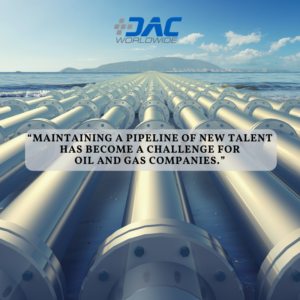Focus on Energy Storage Propels Research Breakthroughs
If you ask experts in the oil and gas industry about threats to their sector, most of them will probably mention the rise of electric vehicles (EVs). The growing popularity of EVs would certainly seem to put a dent in the demand for traditional fossil fuels.
But what if those same fossil fuels could play a role in creating the very batteries EVs rely upon to power their electric engines? Wouldn’t that be ironic? If cutting-edge research comes to fruition, that could very well be the case.
According to a recent Mining.com article by Coco Liu, “[a]s more vehicles run on electricity and renewables become more widespread, the need for batteries and hydrogen fuel cells will only grow. But the rapid expansion of energy storage infrastructure has a cost.”
Liu notes that “[t]he global electric vehicle boom has resulted in a lithium supply shortage…[and t]he pressure of mining more minerals for batteries has also threatened some of the world’s largest, most diverse and fragile natural ecosystems.”
That’s why “scientists are scrambling to find new materials that could revolutionize energy storage.” And some of their potential solutions certainly sound a bit like science fiction. For example, would you believe scientists think keratin, a protein found abundantly in chicken feathers, could be used to create membranes for hydrogen fuel cells?
Or what about leftover wine and scrap iron? Researchers believe these industrial waste products could be used to manufacture anodes for EV batteries, replacing graphite that can be costly to mine and “bad for both human health and the environment,” according to Liu.
The battery alternative of interest to the oil and gas sector, though, is the one being created at a Northwestern University laboratory. Scientists there “have engineered a new type of molecule that can self-assemble in water. The final outcome, according to the scientists, is a novel material that could be charged just like a battery.”
This “new material is ferroelectric, a characteristic that allows it to store electrical energy when exposed to a voltage.” Liu notes that, while “conventional ferroelectric materials often contain rare or toxic metals,” the new material created at Northwestern is made from a combination of amino acids from food waste and…drumroll, please…petroleum!
In particular, the petroleum molecules used “are not as difficult to decompose as most petroleum-based products such as plastics are.” This means they could also potentially be biodegradable. While implementation of these cutting-edge materials could require years of further research and development, it’s exciting to see how scientists continue to break new ground.
In the meantime, the oil and gas industry continues to thrive despite new challenges from the up-and-coming EV sector. Indeed, oil and gas will continue to fuel our country for many years to come.
That means there will be no shortage of oil and gas jobs for the foreseeable future. In fact, many oil and gas companies still struggle to hire the skilled workers they desperately need. Moving forward, companies will need to continue to hire skilled workers while also upskilling current workers.
So how do oil and gas companies improve their focus on technical skills? For new and current employees, the answer is technical training. Oil and gas workers need both fundamental knowledge and hands-on technical skills with real industrial equipment they’ll encounter on the job. Be sure to check out Bayport Technical’s wide variety of hands-on oil and gas training systems to take your oil and gas training to the next level!
- Published in News
Fossil Fuels Power US Energy Independence
As experts contemplate the future of energy in the United States, much of the attention gets paid to alternative energy sources, like solar and wind. Recent developments, however, give fans of nuclear energy hope that new nuclear fusion plants may also play an important role.
In the meantime, the U.S. continues to rely primarily on fossil fuels and it has done so to amazing effect. According to a recent Industry Week article by Stephen Gold, “over the past two decades the United States has evolved from a degree of foreign-energy dependency that threatened our economy and national security to the premier energy producer in the world.”
While this is great news for citizens who feel the pain at the gas pump, it’s also important “for U.S.-based manufacturers, who consume roughly one-third of this country’s available energy resources each year.”
The American experience with energy resources has been an interesting ride over the course of the country’s history. As Gold points out, “[s]ince the start of this country’s industrial revolution in the mid-19th century, Americans took their vast energy resources for granted.”
That all changed in the 1970s, though, thanks to the OPEC oil embargo. The U.S. government’s failure to develop a strategic energy resources plan coupled with “a moratorium on building new nuclear reactors after 1979’s partial meltdown at Three Mile Island” led to an ever-increasing reliance on foreign energy suppliers.
The deficit hit its peak in 2006: “U.S. energy consumption outpaced production by 28.7 quadrillion BTUs, and imports outpaced exports by 29.9 quadrillion BTUs.” Something happened in the early 2000s that would turn the tide, though. Oil and gas experts call it the “shale gale.”
According to Gold, “[t]he shale gale…was tied to the hydraulic fracking revolution, made possible by new horizontal drilling and mapping technologies. By 2016, more than half of all American oil output resulted from fracking; by 2018 the United States became the world’s top crude oil producer; and by 2019 the U.S. was a net total energy exporter.”
Today, things are better than ever. As of last year, the U.S. “produced 13.4 million barrels per day (b/d) of crude oil, twice as much as a decade ago. This easily tops Saudi Arabia’s 10.8 million b/d and Russia’s 10.7 million b/d.”
Moreover, “[t]he U.S. is also the world’s largest producer of natural gas, a title it’s held since surpassing Russia in 2011. In fact, we produce almost all the natural gas we consume and are the globe’s largest exporter of LNG. Moreover, 40% of our nation’s electricity needs are met through natural gas power plants, twice as much as through coal-fired power plants.”
As our country continues to explore other sources of energy, it’s important to remember that our current level of energy independence is the result of oil and gas, and these resources will continue to fuel our country for many years to come.
That also means there will be no shortage of oil and gas jobs for the foreseeable future. In fact, many oil and gas companies still struggle to hire the skilled workers they desperately need. Moving forward, companies will need to continue to hire skilled workers while also upskilling current workers.
So how do oil and gas companies improve their focus on technical skills? For new and current employees, the answer is technical training. Oil and gas workers need both fundamental knowledge and hands-on technical skills with real industrial equipment they’ll encounter on the job. Be sure to check out Bayport Technical’s wide variety of hands-on oil and gas training systems to take your oil and gas training to the next level!
- Published in News
Liquefied Natural Gas Exports Hold Great Promise for US Economy
Whether it’s filling up your vehicle at the gas station or paying your monthly utilities, most Americans understand the impact American energy production can have on the bottom line. That’s why many people appreciate the moves the country has made in recent years to become energy independent.
While oil production gets a lot of attention, there are other products that contribute a significant amount to the American economy. For example, according to a recent Fox Business article by Eric Revell, liquefied natural gas (LNG) exports “supported about 222,450 jobs and generated $23.2 billion in labor income” in 2023. “The LNG industry also contributed $43.8 billion to the U.S. GDP and LNG exports yielded $11 billion in tax and royalty revenues for federal, state and local governments.”
Experts believe the LNG industry can contribute even more if allowed to do so. At issue is the government’s recent attempt to temporarily pause new LNG export permits in order to study the likely impact on carbon emissions of LNG expansion. A federal court blocked that pause at the request of more than a dozen states.
Proponents of LNG expansion point out that, in 2023, “the U.S. led the world in LNG exports with over 86 million metric tons exported to customers abroad. Europe is the primary export destination of LNG shipped from the U.S., followed by Asia.”
How much could LNG expansion generate? Experts have thrown out some impressive estimates. For example, some believe that “between 515,960 and 901,250 jobs — as well as about $103.9 billion in labor income” could be generated in the next two decades.
Likewise, “between $122.5 billion and $215.7 billion” could be added to the U.S. GDP, as well as “between $26.9 billion and $47.7 billion in tax and royalty revenues to federal, state and local governments” could be generated by 2044.
At present, it’s unclear whether the government will continue to seek a pause on LNG export permits or whether LNG industry producers will get their wish for increased expansion. What is certain is that LNG exports will continue to be an important economic benefit in the overall American energy picture.
What does this mean for the oil and gas industry as a whole? There will be no shortage of oil and gas jobs for the foreseeable future. In fact, many oil and gas companies still struggle to hire the skilled workers they desperately need. Moving forward, companies will need to continue to hire skilled workers while also upskilling current workers.
So how do oil and gas companies improve their focus on technical skills? For new and current employees, the answer is technical training. Oil and gas workers need both fundamental knowledge and hands-on technical skills with real industrial equipment they’ll encounter on the job. Be sure to check out Bayport Technical’s wide variety of hands-on oil and gas training systems to take your oil and gas training to the next level!
- Published in News
Oil and Gas Giant Resets Production Strategy
In response to continued depletion of fossil fuels and growing worries over the effects of climate change, many oil and gas companies have made significant commitments to not only boosting their investments in alternative energy, but also cutting back on oil and gas production.
Recently, however, experts have noticed some shifting priorities in the ranks of the world’s largest oil and gas companies. For example, according to a recent Reuters article by Ron Bousso, oil and gas giant “BP has abandoned a target to cut oil and gas output by 2030 as CEO Murray Auchincloss scales back the firm’s energy transition strategy to regain investor confidence.”
In 2020, BP revealed “the sector’s most ambitious” strategy, promising to “cut output by 40% while rapidly growing renewables by 2030.” However, that lofty goal was scaled back “to a 25% reduction” in February of this year.
Now, the company has signaled that it will instead be “targeting several new investments in the Middle East and the Gulf of Mexico to boost its oil and gas output.” This move appears to be motivated by a desire to appease investors who want to stay “focused on near-term returns rather than the energy transition.”
Bousso notes that all the details are not yet known, as “Auchincloss will present his updated strategy, including the removal of the 2030 production target, at an investor day in February, though in practice BP has already abandoned it…It is unclear if BP will provide new production guidance.”
BP isn’t the only oil and gas giant rethinking the future. According to Bousso, “[r]ival Shell has also slowed down its energy transition strategy since CEO Wael Sawan took office in January, selling power and renewable businesses and scaling back projects including offshore wind, biofuels and hydrogen.”
What’s driving this step back from transitioning to alternative energy? Bousso believes “[t]he shift at both companies has come in the wake of a renewed focus on European energy security following the price shock sparked by Russia’s invasion of Ukraine in early 2022.”
While a disappointment to green energy advocates, not every forward-looking plan is being abandoned. Bousso notes that BP “continues to target net zero emissions by 2050.” The company has also “invested billions in new low-carbon businesses” since 2020 and “acquired the remaining 50% in its solar power joint venture Lightsource BP as well as a 50% stake in its Brazilian biofuel business Bunge.”
What does this mean for the oil and gas industry as a whole? There will be no shortage of oil and gas jobs for the foreseeable future. In fact, many oil and gas companies still struggle to hire the skilled workers they desperately need. Moving forward, companies will need to continue to hire skilled workers while also upskilling current workers.
So how do oil and gas companies improve their focus on technical skills? For new and current employees, the answer is technical training. Oil and gas workers need both fundamental knowledge and hands-on technical skills with real industrial equipment they’ll encounter on the job. Be sure to check out Bayport Technical’s wide variety of hands-on oil and gas training systems to take your oil and gas training to the next level!
- Published in News
Summer Heat and Hurricanes Put Pressure on Oil and Gas Companies
When summer rolls around, many Americans head to the coasts to enjoy a vacation on the beach. Over the past several years, though, millions of vacations—and everyday lives—have been interrupted by intense heat waves and powerful storms.
Some experts believe this trend is the result of global climate changes. Whatever the cause, it’s a trend that has millions of people across the country and around the world worried about what life will be like in the years to come.
Moreover, individuals aren’t the only ones affected. Oil and gas companies along coastal areas have learned to prepare and brace their facilities for the worst. According to a recent Reuters article, authors Shariq Khan and Nicole Jao predict that “[a] double whammy of record heat and hurricanes should test U.S. refiners’ resilience in coming weeks, raising the risk of extremely volatile fuel prices in the middle of the peak travel season.”
The authors point out that “[t]he Atlantic hurricane season from June through November is an annual threat for U.S. refineries. Half of the country’s over 18-million-barrel-per-day refining capacity is located along the Gulf Coast, highly susceptible to tropical storms.”
Unfortunately, “[r]efiners this year may have to brace for more storms than usual. Government forecasters expect up to seven major hurricanes in coming months, double the annual average of three major Atlantic hurricanes with wind speeds over 111 miles per hour.”
When storms are forecast to hit oil production hotspots, refiners often cut back operations dramatically, even closing refineries and shutting down ship traffic to affected ports. Mandatory evacuation orders can also impact worker availability at plants.
According to the U.S. Energy Information Administration, “If a major storm hits the Gulf Coast’s refining system, it could remove as much as a million barrels a day of fuel supply and lead to extended outages or even permanent closures.” But hurricanes aren’t the only problem oil and gas companies have to deal with currently.
Khan and Jao note that “[i]n addition to hurricanes, refineries this year must contend with more problems related to scorching heat. The latest U.S. monthly temperature outlook foresees above average temperatures in large parts of the U.S. in July, typically the hottest month. Excessive temperatures have supersized effects on commodity supply chains, including oil and fuel.”
Not only is excessive heat dangerous for workers, “[t]riple-digit temperatures could lead to equipment malfunctions and reduction in refining capacity. Extreme heat last year led to a 500,000 bpd reduction in Gulf Coast refined products output.”
There is a silver lining, however. Khan and Jao point out that “[a] robust maintenance season earlier this year allowed U.S. refineries to undertake major upgrades and perform detailed upkeep which had been repeatedly postponed due to surging post-pandemic demand and supply disruptions.”
As oil and gas companies strategize and develop plans to tackle future heat waves and hurricanes, they will continue to need highly skilled workers to conduct critical maintenance activities that will help them weather the storm (pun totally intended).
Given the ongoing skills gap across all major industries, oil and gas companies will need to focus on hiring highly skilled workers and training current workers with the skills they need to succeed. So how do oil and gas companies improve their focus on technical skills? For new and current employees, the answer is technical training.
Oil and gas workers need both fundamental knowledge and hands-on technical skills with real industrial equipment they’ll encounter on the job. Be sure to check out Bayport Technical’s wide variety of hands-on oil and gas training systems to take your oil and gas training to the next level.
- Published in News
Will Oil and Gas Workers Get Left Behind?
When you think of oil production, which countries come to mind? If you’re like many people, you may be thinking of countries throughout the Middle East, such as Saudi Arabi, Qatar, and United Arab Emirates. Would you believe, though, that one of the preeminent oil basins in the entire world is located right here in the United States?
In a recent Forbes article by Ian Palmer, the author notes that the Permian basin, which is located in southeast New Mexico and west Texas, “is the king of crude in the U.S.” Responsible for “producing over 6 MMbpd (million barrels per day),” the Permian has made New Mexico “the second highest oil-producing state in the U.S.”
Experts estimate “that crude oil from the Permian will increase 8% this year…leading to record levels of oil production in the U.S. that will approach 14 MMbpd by 2025…the highest oil production in the world.” However, Palmer points out that the oil and gas industry “predicts peak oil production in the 2030s.” After that peak, “[t]he general idea is that fossil energies would decline as renewable energies would increase.”
What’s driving these changes? (Pun totally intended.) If you guessed electric vehicles (EV), you’d be partially right. In addition to EVs, the push for renewable energy sources also comes from efforts to address climate change, as well as the fact that fossil fuel supplies are not renewable and will one day have to be replaced with alternatives.
Oil giant British Petroleum estimates “worldwide fossil energy consumption falling steadily from 80% now to 28-55% by 2050. Coal will fall the most, oil will fall, and natural gas may or may not fall.” New Environmental Protection Agency rules aimed at vehicle emissions could spur the transition to EVs, though, which could accelerate the decline in oil production.
This might seem like a problem for a state like New Mexico, but Governor Lujan Grisham has made a “strong commitment to address climate change. The state has mandated 80% of electricity to be provided by renewables by 2040, and greenhouse gas (GHG) emissions to be reduced by 45-50% based on 2005 levels.”
As the transition to renewables gains momentum, many in New Mexico are beginning to ask questions about what is to become of the state’s oil and gas workers. According to a recent article from The Wilderness Society, author Nicole Segnini notes that “the oil and gas industry hugely depends on Latinx and immigrant workers. According to New Mexico’s Bureau of Labor Statistics, Latinos represent 46% of the state’s oil and gas workforce, many of whom are immigrants.”
Segnini acknowledges that “New Mexico, and the U.S. as a whole, must transition to renewable energy. But as they make that change, they need to ensure these workers, who have played such a crucial role in the economy, are not left behind. The state must value their expertise and livelihoods as it navigates the necessary transition to a healthier, more sustainable economy.”
For many Latinos and immigrants in New Mexico, “jobs in or supporting the fossil fuel industry are among the very few available to care for their families.” Unfortunately, it’s also this same group “who bears the brunt of the industry’s challenges and pollution.”
Segnini notes that “[o]il and gas workers in Southeast New Mexico…are not sure if they’ll be replaced, if they’ll have to move or if they’ll even get a fair chance at new clean energy jobs.” In fact, “[m]any fear people from outside the state of New Mexico will get those jobs instead, leaving them without a paycheck—and without easy access to training that could help them transition into safe and quality jobs in renewable energy or other industries.”
For example, Gabriela Rueda, originally from Mexico and living in New Mexico for the last five years, says, “Our community needs funds to improve the workforce, have other developments and training with work equipment.” She and others working in the New Mexico oil and gas industry “all have one thing in common: they understand that the oil and gas industry has many flaws and could end. They just want to be considered when that happens.”
Thanks to the advocacy of Somos Un Pueblo Unido, a New Mexico immigrant and worker rights organization, the most recent New Mexico state legislative session secured “$6 million from the state’s budget for New Mexico’s adult education division to expand integrated education and skills building programs for disengaged and difficult to reach adult workers,” as well as “a $1 million pilot program to provide cash stipends to low-income workers enrolled in adult education and integrated education training program.”
Segnini concludes that “it is crucial the state…provides equitable access to workforce development and adult education programs and invests significantly in supplemental income for workers enrolled in training…Providing support, retraining opportunities and pathways to new employment sectors ensures that these workers are not left behind but rather empowered to thrive in a rapidly evolving energy landscape.”
For New Mexico and any other states navigating the transition from fossil fuels to alternative energy sources, the Amatrol family of companies can help with all your training needs. Oil and gas companies will continue to need skilled workers as oil production continues to increase over the coming decade.
As the renewable energy transition ramps up, companies will still need skilled workers. Many of the skills workers will need will be like those needed to produce traditional fossil fuels, while new skills will also need to be mastered. Amatrol, along with its sister companies, DAC Worldwide and Bayport Technical, offer a wide variety of training tools and systems to teach workers the skills they need to succeed.
For example, both DAC Worldwide and Bayport Technical manufacture oil and gas training tools and systems that teach hands-on technical skills with real industrial equipment they’ll encounter on the job. Here are a couple of samples of the types of training aids these companies produce:
- DAC Worldwide’s Extended Wellhead Assembly Cutaway (295-795E) depicts the complete assembly of components used in creating a wellhead, which are used in oil & gas production operations. The full-size, fully detailed example of a high-pressure wellhead assembly gives learners a first-hand view into a component that is found in oilfield applications worldwide.
- Bayport Technical’s Cooling Tower Working Demonstrator (142-CT2) is a scaled, acrylic replica of a forced draft cooling tower used in oil refineries and petrochemical plants. This working demonstrator allows a full view of how water is filtered through the tower to cool it off and then return it the factory. This tabletop system includes a water basin and distribution system, heater assembly, pump, fan, splash bars, air intake louvers, draft eliminators, and temperature gauges.
When it comes to teaching the skills workers need in the alternative energy sector, Amatrol provides a full array (again, pun totally intended) of solar and wind trainers. Here are a couple of examples of Amatrol’s green technology training systems:
- Amatrol’s Solar PV Troubleshooting Learning System (950-SPT1) teaches a range of solar photovoltaic (PV) operation, maintenance, and troubleshooting skills through a unique combination of eLearning curriculum and hands-on experience with real industrial solar PV components. That’s why Amatrol’s Solar PV Troubleshooting Learning System features a wide variety of industry-standard solar PV equipment to teach relevant hands-on skills, including: a mobile workstation with a combiner box, MPPT charge controller, micro inverter, grid interactive inverter, programmer, and communications gateway and hub.
- Amatrol’s Turbine Electric Hub Troubleshooting Learning System (950-TEH1) teaches learners adaptive skills for wind turbine operation, adjustment, and troubleshooting in a wide variety of situations. Turbine Electric Hub Troubleshooting training system allows learners to develop and practice component, subsystem, and system level skills. It is fully functional like a utility-scale turbine electric hub. Turbine Electric Hub Troubleshooting includes Amatrol’s unique electronic fault insertion system, which allows instructors to electronically create realistic hub problems and then track the learner’s progress in solving the problem.
Reach out to an expert training consultant with Amatrol today to get started on the path to training the next generation of workers!
- Published in News
Shale Oil Slump Takes Toll on Deepwater Port Development
If you only listen to politicians, you might think that the U.S. is utterly dependent upon foreign countries to feed its demand for fossil fuels. However, U.S. oil production continues to increase and domestic oil companies have been exporting oil to Europe and Asia for many years now.
In fact, over the course of the last decade, domestic shale oil has led the production boom. According to a recent Reuters article, author Arathy Somasekhar notes that, in the wake of the shale oil boom, “an oil pipeline company pitched an ambitious multi-billion-dollar export port off the Texas coast to ship domestic crude to buyers in Europe and Asia.”
That deepwater port, known as Sea Port Oil Terminal or SPOT, recently “became the first project to receive a license from the U.S. maritime regulator for a deepwater port that could load two supertankers, each of which can carry up to 2 million barrels of oil at a time.”
Sadly, this could be a case of too little, too late, as “multi-year regulatory delays, a loss of commercial backers and slowing U.S. shale production has left SPOT…and its three rival projects without any secured customers.”
Moreover, SPOT’s “cost has soared to about $3 billion…from an original estimate of $1.85 billion.” This has led to “[s]hale producers and traders…balking at the higher-than-expected loading fees for new projects even if they are able to fully load supertankers.”
According to Somasekhar, “[a] deepwater port allows customers to load oil directly onto a supertanker, eliminating the additional cost of loading the oil on smaller ships at shallower ports and then transferring the crude from the smaller vessels to larger ones.”
One would think more deepwater ports are needed, since there’s currently only “one U.S. offshore port – called the Louisiana Offshore Oil Port – that can fully load supertankers. However it primarily handles oil produced in the Gulf of Mexico and has few pipes that link to the top U.S. shale field, the Permian, in West Texas.”
Somasekhar notes that “SPOT’s largest target would be moving shale oil.” However, “slowing shale output gains have created uncertainty for shippers.” Moreover, “existing facilities can handle as much as another 1.5 million barrels, though port congestion could limit that number.” As a result, planned deepwater ports like SPOT find themselves in limbo right now.
Despite the current concerns, at least “three other deepwater port projects along the Texas coast…have sought U.S. approvals for offshore ports. So far, none have received licenses.” Experts believe “[b]etween the current dock capacity along the U.S. Gulf Coast, and the most aggressive production projections, it appears that one, at most two, could proceed.”
While the future of additional deepwater ports off the Texas coast remain in doubt, it’s clear that experts still expect U.S. oil production to continue to increase in years to come. This is good news for the oil and gas industry, which has been beset with a variety of challenges posed by the gaining popularity of alternative energy sources and electric vehicles.
As oil and gas companies work to adapt to new challenges, they will continue to need highly skilled workers to work in new facilities, such as planned deepwater ports. Given the ongoing skills gap across all major industries, oil and gas companies will need to focus on hiring highly skilled workers and training current workers with the skills they need to succeed.
So how do oil and gas companies improve their focus on technical skills? For new and current employees, the answer is technical training. Oil and gas workers need both fundamental knowledge and hands-on technical skills with real industrial equipment they’ll encounter on the job. Be sure to check out Bayport Technical’s wide variety of hands-on oil and gas training systems to take your oil and gas training to the next level!
- Published in News
Oil and Gas Companies Expanding Production of Alternative Fuels
We won’t be able to rely upon fossil fuels forever. That’s the message that experts have been communicating for decades now. And it’s true. Fossil fuels are non-renewable, and they will run out at some point. That’s why many oil and gas companies have made major investments into research and development targeted at developing new renewable alternative fuels.
According to a recent article in The Wall Street Journal, author Yusuf Khan reports that “[w]aste biomass made from sugar cane is set to power the next generation of sustainable aviation fuels, with a new $4 billion plant scheduled to be built in the farmlands of Louisiana.” Who’s behind this bold plan to convert sugar cane waste into fuel?
Khan notes that “[r]enewable hydrogen producer DG Fuels, energy giant BP and chemicals maker Johnson Matthey plan to produce 180 million gallons of sustainable aviation fuel, or SAF, a year in St. James Parish, Louisiana—enough for 30,000 trans-Atlantic flights annually.” The process is far from an easy one, however.
Sugar cane waste is used to create carbon monoxide, which is then “combined with blue hydrogen to create a mixture called syngas.” Syngas “can then be used to make a form of low-carbon kerosene through Johnson Matthey and BP’s proprietary technology, known as Fischer Tropsch CANS.” The resulting SAF will help aviation companies reduce their carbon footprint, since it produces substantially less carbon dioxide than traditional fuels.
Currently, “[a]viation accounts for just under 3% of global carbon emissions. As commercial jets are hard to electrify, the industry is looking at greener fuel sources to decarbonize.” Khan notes that “[j]ust over 600 million liters of SAF were produced in 2023, representing a minuscule 0.2% of global jet-fuel use… To meet net zero, some 449 billion metric tons of SAF are going to be needed by 2050.”
The Louisiana plant that will use sugar cane waste isn’t the only SAF plant on the horizon. Khan reports that “[s]everal large-scale SAF plants are also set to be built over the next few years, globally. Oil refiner Phillips 66, for example, is hoping to start producing SAF using used cooking oils this year, aiming for 800 million gallons of fuel a year from a site in California.”
As oil and gas companies pivot to producing new renewable fuel alternatives, they will continue to need highly skilled workers to work in these new facilities. Many of the skills workers will need will be similar to those needed to produce traditional fossil fuels. Given the ongoing skills gap across all major industries, oil and gas companies will need to focus on hiring highly skilled workers and training current workers with the skills they need to succeed.
So how do oil and gas companies improve their focus on technical skills? For new and current employees, the answer is technical training. Oil and gas workers need both fundamental knowledge and hands-on technical skills with real industrial equipment they’ll encounter on the job. Be sure to check out Bayport Technical’s wide variety of hands-on oil and gas training systems to take your oil and gas training to the next level!
- Published in News
Bayport Technical’s Distillation Trainer Provides Insight into Key Industrial Process
Oil and gas industry operators and technicians must possess knowledge and skills related to a variety of industrial processes. One of the most common processes used in these industries is distillation, which separates mixtures based upon the different conditions required for phase change of the mixture’s components.
Oil refineries use distillation to process crude oil into a wide array of different products. For example, crude oil can be distilled into component products, such as naphtha, kerosene, and gas oil, based upon the differences in their boiling points.
At oil and gas facilities, industrial distillation takes place in a distillation tower or column. Although the process can be quite complex as it is customized for each particular application, the essential underlying process involves heating a mixture, such as crude oil, to force its components parts, each of which has a different boiling point, into the gas phase.
As the gas vapor rises in the distillation tower or column, it eventually condenses back into a liquid and collects, either for final use or further refinement to increase its purity. In addition to crude oil, distillation is also commonly used for a wide variety of other applications, such as alcohol production, creation of liquefied gases, desalination, and chemical manufacturing.
Bayport Technical’s Portable Distillation Trainer – Glass, with Chiller (130-DTU2) enables distillation operations personnel and maintenance technicians to visualize what occurs inside the distillation towers/columns that dominate the landscape in a petroleum refinery or petrochemical plant.
More importantly, this trainer relies solely on the actions of the operator or technician to operate. Without automatic controls, the trainer forces users to quickly develop their own knowledge and skills. Fortunately, the glass fractionating column allows operators to see the results of their actions very quickly.
The Portable Distillation Trainer – Glass, with Chiller provides hands-on experience with a wide variety of real industrial equipment, including: a main column with perforated trays, four centrifugal pumps, overhead condensers, heat exchangers, a cooling system, a reboiler, temperature gauges, flow control/indicating rotameters, panel mount thermometers, a digital manometer, a charge tank, rundown tanks, and piping.
Together, this equipment provides instructors with a working model of the equipment used in refineries or petrochemical plants and accurately demonstrates distillation on a small scale. The trainer comes with a carrying case, which also acts as a stand for the unit.
The Portable Distillation Trainer – Glass, with Chiller can be used to teach everything from how to draw P&IDs to the actual operation of a distillation column. The unit is extremely flexible and forgiving. For example, instructors can demonstrate different flooding scenarios and the trainer will recover in just a few minutes. Moreover, comprehension of distillation principles is greatly improved by seeing the color graduation of the components across the column.
Visit Bayport Technical’s website to learn more about the Portable Distillation Trainer – Glass, with Chiller, as well as the wide variety of other technical training products available.
- Published in News
Oil and Gas Industry Must Address Methane Emissions
It’s no secret that climate change scientists have laid much of the blame for global warming at the feet of fossil fuels and the oil and gas industry. Now, new EPA rules could impact the oil and gas industry as proposed regulations take aim at reducing methane emissions.
According to a recent Associated Press article by Matthew Daly, “[t]he Environmental Protection Agency said the rule will sharply reduce methane and other harmful air pollutants generated by the oil and gas industry, promote use of cutting-edge methane detection technologies and deliver significant public health benefits in the form of reduced hospital visits, lost school days and even deaths.”
The authors note that “[o]il and gas operations are the largest industrial source of methane, the main component in natural gas and far more potent than carbon dioxide in the short term. It is responsible for about one-third of planet-warming greenhouse gas emissions.”
While the world’s largest oil and gas companies have already pledged to reduce methane emissions, smaller oil and gas companies should be aware that “[t]he methane rule…targets emissions from existing oil and gas wells nationwide, rather than focusing only on new wells, as previous EPA regulations have done.”
The new methane rule “also regulates smaller wells that will be required to find and plug methane leaks. Such wells currently are subject to an initial inspection but are rarely checked again for leaks.” Why target these smaller wells? “Studies have found that smaller wells produce just 6% of the nation’s oil and gas but account for up to half the methane emissions from well sites.”
What does this mean for a wide variety of oil and gas companies? They will need to invest money, time, and effort “to plug orphaned wells” and “patch leaky pipes.” This shines a light on the need for ongoing maintenance in the oil and gas sector. To get the job done correctly, these companies will also need highly skilled workers with hands-on experience with real equipment.
So how do oil and gas companies improve their focus on technical skills? For new and current employees, the answer is technical training. Oil and gas workers need both fundamental knowledge and hands-on technical skills with real industrial equipment they’ll encounter on the job. Be sure to check out Bayport Technical’s wide variety of hands-on oil and gas training systems to take your oil and gas training to the next level!
- Published in News
Four Factors Contributing to the Oil and Gas Industry Skills Gap
Click HERE to view Four Factors Contributing to the Oil and Gas Industry Skills Gap as a multimedia presentation.
The COVID-19 pandemic and its continuing aftereffects have shined a spotlight on the job market in the United States. Unemployment numbers remain high, yet we see “Now Hiring” signs everywhere we look. What’s going on?
In many industries, there exists what is commonly called a “skills gap” that accounts for the number of open, unfilled positions. This gap refers to the difference between the number of highly-skilled workers that employers need and the number of such workers available.
Nowhere is the skills gap more noticeable than in the oil and gas industry. As Vivek Kumar notes in an IndustryWired article, “[m]any industry professionals believe that a growing skills shortage has been the biggest challenge for the industry.”
According to a Rand Corporation study, the industry will require a “projected 1.9 million future oil and natural gas workers.” Because of the skills gap, hundreds of thousands of those positions could remain unfilled.
In this article, we’ll take a look at four factors contributing to the oil and gas industry skills gap, including an aging workforce, advanced technologies, reluctant millennials, and training challenges specific to the oil and gas industry. We’ll also examine the role training plays in bridging the skills gap, as well as how Bayport Technical’s training solutions prepare workers for success in the oil and gas industry.
An Aging Workforce Takes Critical Skills and Experience with Them When They Retire
 In an ideal world, aging employees close to retirement would help to train new, younger workers to take their place, passing along valuable knowledge accumulated from their years of experience on the job.
In an ideal world, aging employees close to retirement would help to train new, younger workers to take their place, passing along valuable knowledge accumulated from their years of experience on the job.
Unfortunately, that is not happening as frequently as it should in today’s oil and gas industry. Too many workers are reaching retirement age in the near future, and not enough new workers are filling open positions to replace them.
As noted by Jake Wengroff in a Synapse article, “[t]he average age of workers in petroleum companies is 50 years old, among the oldest of any industry…Now more than ever: with an increase in the number of experienced individuals retiring, the energy industry is facing a shortage of trainers capable of mentoring the next generation.”
A Grainger article summarizes the effect this is having on the oil and gas industry skills gap: “[m]any oil and gas companies have large segments of their workforce who are able to retire in the next few years. As these experienced workers leave, companies will have to bring in new employees and contractors who are less experienced and unfamiliar with the facility.”
New Technologies Are Transforming the Oil and Gas Industry
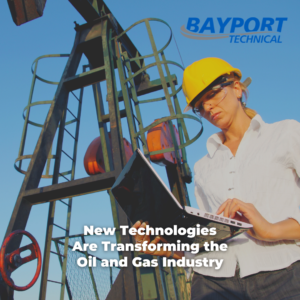 Adding to the skills gap problem is the fact that, according to Kumar, “[t]he oil and gas industry is rapidly moving towards digital transformation.” This is not surprising, as new technologies like artificial intelligence, data analytics, and the Internet of Things are transforming industries of all kinds around the world.
Adding to the skills gap problem is the fact that, according to Kumar, “[t]he oil and gas industry is rapidly moving towards digital transformation.” This is not surprising, as new technologies like artificial intelligence, data analytics, and the Internet of Things are transforming industries of all kinds around the world.
The result is that today’s oil and gas workers need more advanced skills than ever before. As Wengroff notes, “[e]xploration, refining, and distribution of oil and gas and alternative energy sources have become complicated processes, as new technologies are introduced to maximize production.”
Workers without the requisite skills must either be replaced or retrained. According to the Rand Corporation study, “[a]s manual skills become less valuable than the technological ones needed to operate the emerging forms of equipment that are characteristic of this sector, many workers with obsolete skills are being displaced.”
The Rand Corporation study concludes:
“The gap between employer needs and employee skills is widest in the near term, when more jobs will open up than the current output of graduates is likely to meet, retirements will increase among the baby-boomer generation, and reliance on technical skills in the workforce will continue to increase.”
The Oil and Gas Industry Is Having Trouble Attracting Millennials
 Attracting workers to the skilled trades has always been an uphill battle. Ask anyone in manufacturing and they will tell you it’s a constant struggle fighting misconceptions and negative perceptions of industry jobs.
Attracting workers to the skilled trades has always been an uphill battle. Ask anyone in manufacturing and they will tell you it’s a constant struggle fighting misconceptions and negative perceptions of industry jobs.
The oil and gas industry is no different. In fact, it probably faces even greater challenges than other industries, because many young people tend to perceive oil and gas jobs as hot, dirty, difficult, and even dangerous.
Clearly, if the skills gap is to be bridged, more effort must be made to increase the number of new workers choosing the oil and gas industry. As Kumar notes, “[c]reating job opportunities for young professionals can be an effective approach to lessen the shortage of talented workforce in the oil and gas sector.”
However, no one believes this task will be easy. In fact, there are even newer concerns to address when it comes to millennials and the oil and gas industry. According to Kumar, “[m]any reports reveal that millennials are tentative to make a career in the industry. This is significantly because of the concerns around the consistency of the industry in the future, contributing to a workforce shortage in the industry. As millennials are becoming more tech-savvy, they want to work in innovative and evolving green energy industries.”
The Oil and Gas Industry Has Unique Training Challenges
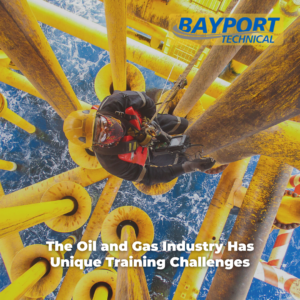 Further compounding the skills gap problem is the fact that the oil and gas industry has unique training challenges. This issue particularly comes into play when thinking about both upskilling incumbent workers and getting new workers up to speed with the skills they need to succeed.
Further compounding the skills gap problem is the fact that the oil and gas industry has unique training challenges. This issue particularly comes into play when thinking about both upskilling incumbent workers and getting new workers up to speed with the skills they need to succeed.
According to Kumar, “[t]he major reason the oil and gas industry faces skills deficiency are numerous training challenges, including regulatory compliance mandates, training costs to an aging workforce and the need to improve production rates while reducing environmental impacts and safety accidents.”
Wengroff points out that, “[a]s the energy industry grows more significant, and new participants enter the value chain, training is vital.” However, the author notes that this doesn’t mean training gets the attention it deserves, because “[s]pending time in instructor-led training sessions takes away from engineering, design, exploration, distribution, or retail marketing activities.”
Wengroff concludes:
“As with other industries, energy companies face a shortage of resources allocated to training. This may seem paradoxical, given the multi-trillion-dollar size of the oil, gas and alternative energy industry. However, with most funds going to exploration or the development of new technologies for extraction, refining, and distribution, training budgets are considered overhead and are often greatly reduced in size.”
Effective Training Can Bridge the Oil and Gas Industry Skills Gap
 As we’ve discussed, there are multiple factors contributing to the oil and gas industry skills gap problem. How do you solve a lack of highly-skilled workers? The obvious solution is to ensure that prospective and current workers have the advanced technical skills they need.
As we’ve discussed, there are multiple factors contributing to the oil and gas industry skills gap problem. How do you solve a lack of highly-skilled workers? The obvious solution is to ensure that prospective and current workers have the advanced technical skills they need.
Of course, putting that “simple” solution into practice is never as easy as it sounds. For example, many employers fail to invest in proper training because they feel like that responsibility should fall on the shoulders of educators at the secondary and post-secondary level.
However, that attitude won’t get you far in the oil and gas industry. With unique safety and regulatory compliance issues aplenty, the oil and gas industry simply cannot ignore the need for effective on-the-job training.
Consider these figures from the Rand Corporation study:
“About half of employers (52 percent) reported employing high-priority occupations that require moderate-term on-the-job training (including inspectors, welders, and roustabouts) and about one in four employers (28 percent) reported having high-priority occupations that require long-term on-the-job training (including mechanics, machinists, and wellhead plumbers). Thus, for many…oil and gas sector employers…it is essential to invest in and commit to providing on-the-job training to ensure their workers can adequately perform their duties.”
Moreover, it’s clear that prospective and current employees want and value ongoing training opportunities. Wengroff discusses this fact in his article:
“According to research conducted by the Society of Petroleum Engineers, employees place a great emphasis on training opportunities when choosing employers. According to the SPE survey, three-quarters (74.6 percent) of employees state that learning and development programs are important in their choice of role, and over half (53.3 percent) indicate that a lack of opportunities would be enough for them to consider leaving the company.”
In addition to being wanted and valued by current and future workers, ongoing training is simply necessary. As the Rand Corporation study notes, “training requires an investment on the part of the employer, as many elements of jobs and their corresponding duties are not directly taught in the classroom — even in occupationally focused courses/degree programs.”
Rather than viewing ongoing training as a cost to be managed, oil and gas companies would do well to instead think of training as an opportunity to invest in its workers. Using an analogy uniquely appropriate to the oil and gas industry, the Rand Corporation study concludes:
“Focusing on the workforce as a pipeline that supports careers rather than a single hiring transaction at entry is essential for sustaining the oil and natural gas industry over the long term. Put differently, the contours of workers’ careers will evolve over time, requiring additional training, guidance, support, and (in some cases) additional degrees or certifications. Focusing only on the education, knowledge, and skills that workers gain from school and bring with them to their jobs is potentially short-sighted.”
Bayport Technical Can Help You Bridge the Oil and Gas Industry Skills Gap
 Starting a new skills training program can be challenging for any company. This is especially true in the oil and gas industry with its specialized equipment and regulatory compliance issues. That’s why it’s essential to get help from a trusted technical training expert.
Starting a new skills training program can be challenging for any company. This is especially true in the oil and gas industry with its specialized equipment and regulatory compliance issues. That’s why it’s essential to get help from a trusted technical training expert.
If you want to take your oil and gas training to the next level, contact the experts at Bayport Technical today. Bayport Technical features a wide variety of oil and gas training solutions, including trainers and working demonstrators.
You’ll find training aids designed specifically for the unique requirements of the oil and gas industry, including solutions providing training with specialized equipment such as flash drum separators, 3-phase separators, storage wells, cooling towers, floating roof tanks, and more.
The experts at Bayport Technical can help you design a training program that addresses the specific needs of your organization. With years of experience providing training solutions to the oil and gas industry, Bayport Technical knows how to help you develop effective training that will provide your workers with the skills they need to succeed.
- Published in News
Bridging the Oil and Gas Skills Gap: Effective Technical Training for Current and Future Employees
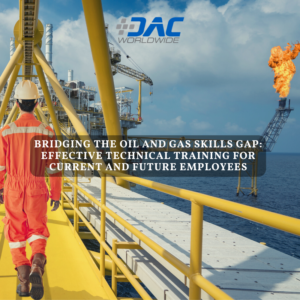 Click HERE to view Bridging the Oil and Gas Skills Gap: Effective Technical Training for Current and Future Employees as a multimedia presentation.
Click HERE to view Bridging the Oil and Gas Skills Gap: Effective Technical Training for Current and Future Employees as a multimedia presentation.
What does 2020 and the coming years hold for industries around the globe? That’s the question on the minds of many executives as they embark on a new year and a new decade. For the oil and gas industry, a skills gap will continue to create problems for employers looking to seize new opportunities for increased efficiency and profitability. Effective technical training for current and future employees will be a key strategy necessary to solve this problem.
In this article, we’ll take a closer look at what 2020 holds for the oil and gas industry, including the reasons behind and current state of the skills gap in the industry. We’ll consider how companies are using training programs to upskill current workers and ensure future workers have the skills they need. Finally, we’ll look at how DAC Worldwide’s unique oil and gas training tools can help employers and educators to bridge the skills gap facing the oil and gas industry.
2020: Opportunities and Challenges
The oil and gas industry has rebounded from the economic downturn experienced several years ago. According to Deloitte’s 2020 Oil, Gas, and Chemical Industry Outlook, there are several reasons for optimism in the new year: “Liquid natural gas (LNG) keeps growing…[f]ossil fuel consumption is expected to continue to grow…[and] [g]lobal…oil supply remains secure thanks to growing US production and healthy stocks.”
The Deloitte report concludes that oil and gas executives need to be “ready to embrace new opportunities for profitable growth…Thanks to the lessons learned from the most recent boom and bust cycle, the industry is better equipped to face the future than it has been at any other point in the past decade. Still, there are fundamental, long-term challenges that they will have to face.”
The 2019 Global Energy Talent Index (GETI) Report agrees, noting that “[t]he oil price has rebounded and new projects are on the rise. The challenge now for the sector is to ensure that the talent supply can keep up with demand.” Why? Quite simply, “[m]aintaining a pipeline of new talent has become a challenge for oil and gas companies.”
The Oil and Gas Skills Gap
A recent Energy Sourcing article notes that, in the coming decade, the “U.S. Bureau of Labor Statistics expects 54.8 million total job openings [in the oil and gas industry],” but there are “not enough skilled people to fill them.” What is behind this skills gap? Experts point to a variety of factors that have contributed to the growing shortage of skilled talent in the oil and gas industry.
Too Few Millennials, Too Many Boomers
According to the 2019 GETI Report, “the impact of economic cycles on job stability is a leading cause of the skills shortage.” During the recent economic downturn, jobs were cut and recruitment efforts were severely curtailed. The result has been the slowing of “[t]he influx of young talent into the sector,” leading to the present “talent crunch.”
Now that the industry is back on the upswing, employers are trying once again to attract young talent, but they’re finding it’s not as easy as it used to be. As a recent Airswift article notes, oil and gas employers are learning a hard lesson: “The skills gap is a problem that money alone can’t solve.”
Not only is oil and gas “the number-one industry millennials wished to avoid working in because of its image,” but competition for young, skilled talent is fierce because the skills gap affects nearly every industry around the world.
Adding to the problem of the short supply of young talent is the fact that “[o]lder workers from the Baby Boomer generation are beginning to reach retirement age, ultimately heading off and taking decades of knowledge and experience with them.” Who will replace them?
 Industry 4.0 Changes
Industry 4.0 Changes
Whoever does replace retiring workers will have to possess a stronger technical skillset than ever before. In addition to skills specific to the oil and gas industry, they will need advanced technological skills that will enable them to succeed as the industry experiences the dramatic changes characteristic of the Fourth Industrial Revolution, otherwise known as Industry 4.0.
Industries across the board and around the world are being impacted greatly by Industry 4.0’s technological advances. Oil and gas is no exception. As the Airswift article notes, “oil and gas companies are collecting more and more digital data which is helping to improve worker safety, monitor reservoir behaviour, plan ahead for smoother digs, maintain hardware and much more.”
They’re also incorporating new technologies, such as drones. According to the Oil and Gas Drone Services Market – Growth, Trends, and Forecast (2019-2024), the market for drone services in the oil and gas industry is expected to grow by more than 60% in the next five years.
As a Business Wire article summarizing the drone forecast notes, “[d]rones are being used for inspection to determine any damage or corrosion and to provide data for structural integrity and visual and infrared photography,” as well as for “pipeline inspection, corrosion checks, security checks, and maintenance issues.”
 Positions Aplenty
Positions Aplenty
In addition to new positions, such as drone pilot and drone fleet manager, the oil and gas industry features a wide range of high-priority roles impacted by the skills gap. According to a recent study by RAND Corporation, the sector needs plenty of “lease operators (also known as well tenders), equipment operators, maintenance and service technicians…electrical engineers…welders, pipeline layers…commercial drivers…machinists [and] warehouse operators.”
The 2019 GETI Report also notes that “the pool of available, blue-collar talent has shrunk rapidly. These skills are proving to be the most urgent of needs…In the US, blue-collar skills are more in demand than engineering roles.”
The Airswift article summarizes things succinctly:
“There is a very real problem standing on the doorstep of oil and gas companies, and it is one that needs a huge amount of effort and foresight to solve for long-term growth and success. We’re talking about the industry skills gap which is crippling energy companies, holding up work and causing projects to go over budget…More than half of professionals in the industry across the globe believe that a growing skills shortage is by [far] the biggest challenge the industry faces both now and in the future.”
Technical Training to the Rescue
As the Airswift article makes clear, oil and gas companies are learning that the skills gap is a problem that won’t go away just by throwing money at it. It requires a multifaceted approach with coordination between a variety of stakeholders, including employers, educators, workforce development programs, and even local, state, and federal governments.
 Ongoing Training Is Key
Ongoing Training Is Key
While long-range plans are set into motion, employers still must do what they can in the meantime. Airswift notes that the 2019 GETI Report’s survey found that nearly two-thirds of respondents believe “companies should be turning their attention internally and retraining existing employees to deliver the skills they need to bridge the gap.”
The author of the Energy Sourcing article agrees: Training current and new employees with cross-functional skills “may be the quickest answer to the industry’s current hiring challenges.” Another strategy many employers consider is luring skilled talent away from other industries.
However, bringing in people from other disciplines isn’t a “plug and play” phenomenon. Instead, the Energy Source article points out that “when it comes to the required knowledge to be proficient in oil and gas exploration and development, they will need additional training in certain areas to enter this industry ready to be contributing members of the team.”
The oil and gas industry differs from other industries in that the wide variety of specialized skillsets it requires make initial and ongoing internal training a necessity. Two recent studies reveal the nature of this need.
The RAND Corporation study concludes:
“About half of employers (52 percent) reported employing high-priority occupations that require moderate-term on-the-job training (including inspectors, welders, and roustabouts) and about one in four employers (28 percent) reported having high-priority occupations that require long-term on-the-job training (including mechanics, machinists, and wellhead plumbers). Thus, for many of the oil and gas sector employers…it is essential to invest in and commit to providing on-the-job training to ensure their workers can adequately perform their duties.”
Similarly, SPE Research’s Training and Development Survey notes that “[u]pon starting a career [in the oil and gas industry], the majority (86.8%) of employees require training…[and] “[n]early a fifth (19.2%) required extensive training”…[and] [m]ost (82.4%) expect their employer to provide them with some of this training.”
 More Than a Short-Term Solution
More Than a Short-Term Solution
The RAND Corporation study goes on to explain that training is much more than just a short-term solution:
“[A] sizeable number of high-priority occupations require long-term training…underscor[ing] the need for ongoing training and professional development after hiring to ensure that employees are getting training both for the jobs they currently have and for the jobs they might take in the future. Focusing on the workforce as a pipeline that supports careers rather than a single hiring transaction at entry is essential for sustaining the oil and natural gas industry over the long term.”
The SPE Research survey also makes a strong case for focusing on employee training as a means of not only empowering employees with the skills they need but also meeting their expectations for career development: “Overall, a wide range of skills are important for a successful career in the oil and gas industry; therefore employees place great emphasis on training and development opportunities when choosing their employers.”
The survey notes that “[i]t is important for companies to have good training and development programs, as three-quarters (74.6%) of employees state that it is important in their choice of role, and over half (53.3%) say that a lack of opportunities would be enough for them to consider leaving.”
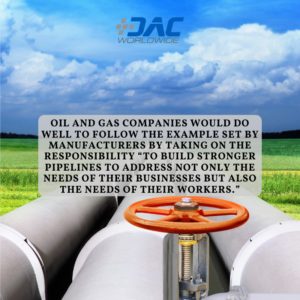 Gaining Momentum
Gaining Momentum
It appears employers are getting the message, since “[e]ight out of ten companies provide at least some formal training as their overall approach to employee development,” and “[t]echnical training is the most common form of training provided by employers.”
This response is being echoed by other industries, including advanced manufacturing. For example, The Manufacturing Institute Training Survey recently made these key findings regarding training programs in the advanced manufacturing sector:
- “Nearly 70% of manufacturers are addressing the workforce crisis by creating and expanding internal training programs for their workforce, among other tactics.”
- “More than 79% of respondents said that they have increased their training activities.”
- “Three-quarters of respondents said that upskilling workers helped to improve employee productivity, with promotion opportunities and morale also leading the list of reasons why companies might embrace training programs.”
- “In dollar terms, the Institute estimates that the sector spent at least $26.2 billion in 2019 on internal and external training programs for new and existing manufacturing employees.”
Oil and gas companies would do well to follow the example set by manufacturers by taking on the responsibility “to build stronger pipelines to address not only the needs of their businesses but also the needs of their workers.”
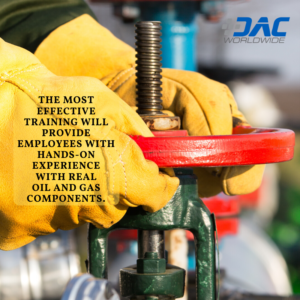 Quality Matters
Quality Matters
What kind of training is necessary? The answer to that question will vary widely amongst oil and gas companies. Is your company upstream, midstream, or downstream? What roles are you having trouble filling because of the skills gap?
What will not change from company to company is the need for high-quality training that efficiently and effectively teaches current and future employees the skills they need to succeed on the job. This is particularly true for the oil and gas industry, given its broad scope of roles with specialized skill requirements.
Unfortunately, many training programs don’t meet the needs of the oil and gas industry. As the RAND Corporation study notes, “[l]ess than half of courses aimed at future workers in the oil and natural gas industry use contextualized instruction. Contextualized instruction uses occupational applications to teach basic academic skills (and vice versa) in such a way that the student learns both simultaneously.”
Teaching relevant skills in the context of the oil and gas industry is especially important because the industry is unique in so many ways. The most effective training will provide employees with hands-on experience with real oil and gas components. The RAND Corporation study supports this approach: “past research shows that contextualized instruction is an effective approach to teaching occupationally focused students…particularly when it includes ‘real-world’ simulations of workplace situations with actual workplace equipment.”
 DAC Worldwide: Your Source for Effective Training Tools
DAC Worldwide: Your Source for Effective Training Tools
Oil and gas companies don’t need to recreate the wheel when looking for quality, effective technical training tools. Instead, they can rely upon a trusted training partner like DAC Worldwide to provide the guidance they need.
DAC Worldwide offers a wide variety of technical training tools specifically for the oil and gas industry. Importantly, these tools provide the contextualized, hands-on training current and future employees expect, want, and need.
Contact a DAC Worldwide representative to consult with you regarding your specific training needs. In the paragraphs that follow, we’ll take a look at just a small sample of the many training tools offered by DAC Worldwide, including training systems, cutaways, dissectibles, models, and sample boards.
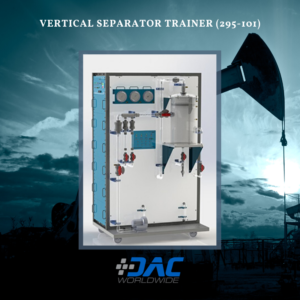 Training Systems
Training Systems
Rather than broad-based training in multiple areas, DAC Worldwide’s training systems provide hands-on training focused on specific tasks. This makes them particularly helpful to employers for skill assessment (either pre-employment or for upskilling purposes).
For example, DAC Worldwide’s Vertical Separator Trainer (295-101) consists of a reduced-scale, three-phrase vertical separator that mimics its real-world counterpart by using alternate production stream components, refined oil, air, and water. It also features real industrial components, such as on-board supply pumps, a regenerative blower, a static mixer, metered valves, flowmeters, an inlet diverter, overflow weir, mist eliminator, and a custom-fabricated, large-diameter, clear acrylic, vertical separator vessel.
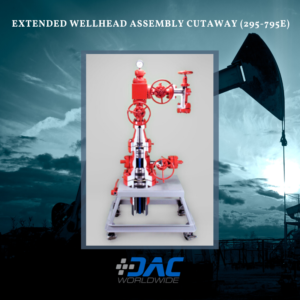 Cutaways
Cutaways
DAC Worldwide’s industrial component cutaways provide hands-on experience with real, industrial components that have been professionally sectioned to expose key internal components to help learners understand how they work. For industrial training relevance, common models by well-known manufacturers are chosen when manufacturing cutaways.
There are two dozen cutaways related to oil production to choose from, including a wide variety of regulators, valves, and gauges. For example, the Extended Wellhead Assembly Cutaway (295-795E) consists of a full-size, fully-detailed example of a high-pressure wellhead assembly that gives learners a first-hand view into a component found in oilfield applications worldwide. It features a variety of real industrial components learners will encounter on the job, including a casing head/starter head, tubing head, tree bonnet adapter, adjustable choke, and gate-type block valve.
 Dissectibles
Dissectibles
DAC Worldwide’s dissectibles take cutaways to the next level by allowing learners to disassemble and reassemble real industrial components. There’s simply no better way to train someone on the maintenance of a particular component than letting them disassemble and reassemble an actual unit. Plus, dissectibles provide experience with real components without damaging actual equipment.
For example, the Representative Triplex, Plunger Mud Pump Dissectible (295-418) is an economical, conveniently-sized triplex plunger-type mud pump assembly that teaches learners hands-on maintenance activities commonly required on larger mud pump assemblies used in upstream oilfield production operations. DAC Worldwide’s dissectible mud pump is a realistic sample that’s similar in geometry, design, and operating characteristics to the larger varieties learners will encounter on the job.
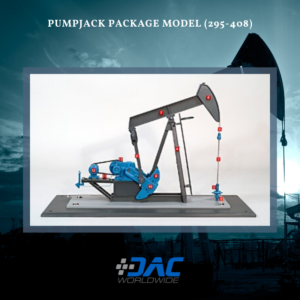 Models
Models
DAC Worldwide also offers a variety of incredibly-detailed, intricately-crafted models. Sometimes industrial training tends to focus so intently on the details that learners can’t see the forest for the trees. Models allow students to learn how the parts of a system work together on a small, easily-managed model without the need for a field trip to an industrial site.
There are more than a dozen models related to oil production to choose from, including separators, tanks, turbines, pumps, and piping systems. For example, the Pumpjack Package Model (295-408) is a highly-detailed, professionally-crafted technical scale model of a common oilfield production pump. Fully-detailed, this benchtop model depicts all primary pump features including counterweights, double-reduction gearbox, walking beam, horse head, sampson post, prime mover, pitman arm assembly, and representative wellhead.
 Sample Boards
Sample Boards
DAC Worldwide’s sample boards offer valuable maintenance training in the identification and selection of a variety of industrial components. Each sample board features a selection of real industrial components mounted with nameplates for easy association with individual components.
For example, the Piping Component Sample Board (865-PAC1) is a hands-on teaching aid designed to supplement courses in piping design, process operations, and pipe installation to help industrial maintenance technicians identify and select industrial piping components. Components from four common piping systems are provided. These samples represent a variety of piping system designs and include a broad range of fittings.
We encourage you to connect with DAC Worldwide via its social media channels, including YouTube, Instagram, LinkedIn, Twitter, and Facebook.
- Published in News













